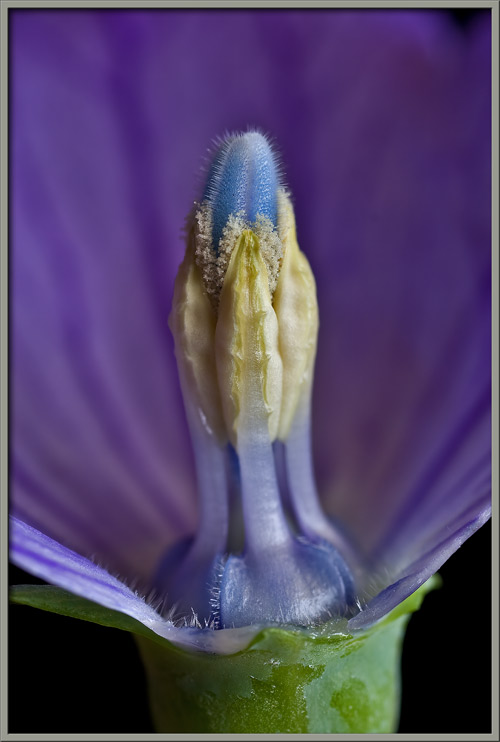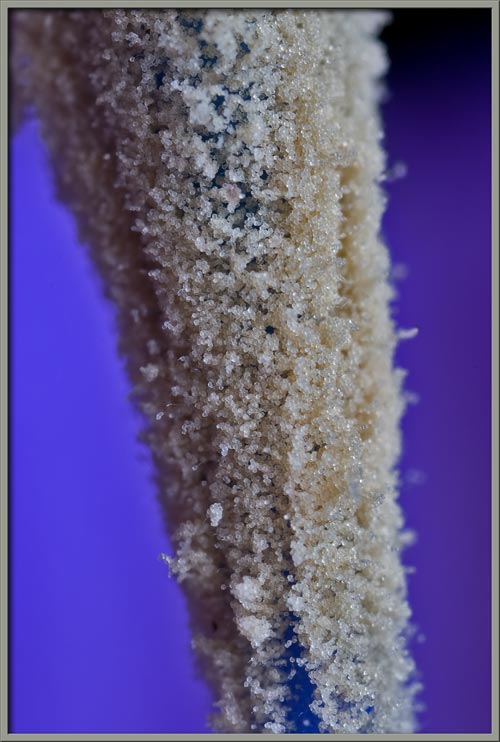Earth laughs in flowers.
Ralph Waldo Emerson,
"Hamatreya"
The unusual perennial studied in
this article belongs to the family Campanulaceae,
which also includes the bluebell, bellflower, and lobelia. Native
to Northeastern Asia, (China, Eastern Siberia, Korea, and Japan), it
has several alternative names: Chinese Bellflower, Japanese Bellflower,
and Common Balloon Flower.
The word balloon refers to the
buds, which prior to blooming, swell to form (mostly) hollow,
pillow-shaped structures. Although the family name translates to
‘bell’, when fully opened, the flower more closely resembles a star.
Platycodon grandiflorus
‘Sentimental Blue’ is a dwarf hybrid which grows to about 15
centimetres in height, and possesses 4 centimetre diameter purple
flowers. These flowers can be seen in the image above, and in the
one that follows. Notice the deep purple radial and subsidiary
veins that decorate the fused petals.
Prior to blooming (anthesis), the petals-to-be are
greenish-white in colour, and are joined at their margins. At
this early stage, the ‘balloon’ shows little signs of the inflation
that is imminent. Notice the pointed green sepals, (modified
leaves), that ring the unopened flower’s base.
Soon however, the bud begins to
swell, and five, pointed protuberances appear at the end-points of the
lines where the petals are temporarily joined.
As time passes, further inflation
occurs, and a hint of the final purple colouration begins to appear.
The colour continues to deepen as
the bud matures.
Strangely, in the occasional bud,
the distinctive protuberances that ring the bud, point inward, rather
than outward. This bud is about to open, as revealed by its deep
purple colour, and the partial detachment of one of the petal tips from
the rest (left image).
Viewed from above, the petal tip
that has begun to separate is more obvious.



As can be seen below, the
flower’s anthers have begun to shed pollen grains which have adhered to
the fine hairs on the style’s strikingly blue surface.
In the higher magnification image
that follows, the roughly spherical shape of these pollen grains is
revealed.
Under the microscope, the stubby,
pointed hairs that cover the style’s surface can be seen clearly.
If you take a close look at the
following image, you can see that a change has occurred. The five
anthers that were earlier in contact with the style have spread apart,
and now rest on the surface of the flower’s petals.
A photomicrograph showing the
cellular structure of a petal, and one of its purple veins, follows.
The two images below show the newly
revealed surface of the style. It is liberally coated with pollen
grains.
Notice that each anther is
connected to the ‘bump’ at the flower’s centre by its flattened
filament. Also note the triangular blue ‘flaps’ in the upper
right corner of the image on the right.
These blue flaps can be seen more
clearly in the image that follows. Notice the light coloured
hairs that grow between the gaps. Beneath these flaps is the
annular nectary disk which
contains the fluid so prized by insects.
The two photomicrographs that
follow show the outer, non pollen producing, and inner, pollen
producing surfaces of an anther.
As was mentioned earlier, Balloon
Flower pollen is roughly spherical in shape.
A higher magnification
photomicrograph reveals some of the surface detail.
Close examination of the flower in
the image below reveals a significant development. The stigma has
finally appeared!



A Flower Garden of
Macroscopic Delights
A complete graphical index of all
of my flower articles can be found here.
The Colourful World of
Chemical Crystals
A complete graphical index of all
of my crystal articles can be found here.












































